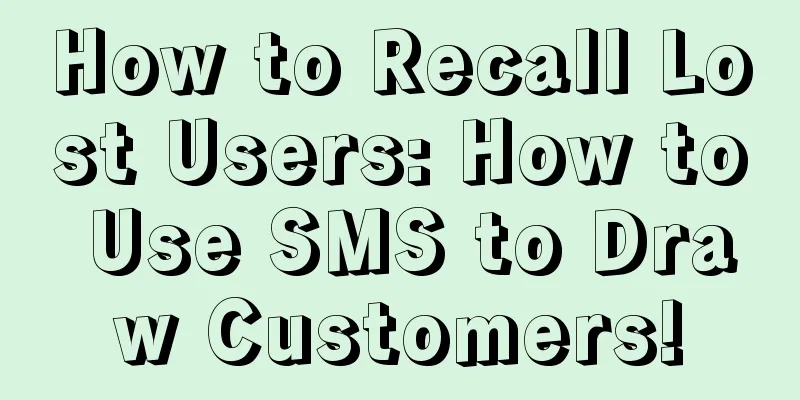Product Marketing 7P Strategy Guide

|
While product marketing is an important function in most companies, it’s hard to find a precise definition anywhere. One of the reasons why product marketing is so hard to describe is that it sits at the intersection of product, marketing, and sales. But in short, product marketing is a strategic function that bridges the gap between product management and sales. 1. What exactly is “product marketing”?If you search for “what is product marketing”, Google will tell you: “Product marketing is the process of bringing products to market”, which is indeed the definition of this term, but it is not the most comprehensive statement because it is too simple to define product marketing in this way. In fact, product marketing also obtains insights from the market and then feeds back to the team to promote product improvement. Therefore, the process of product marketing is divided into two separate parts – “before” and “after” the product launch. Product Marketing Cycle Therefore, a more comprehensive definition of product marketing is that product marketing is the midpoint connecting the two directions of product and market. This means that the Product Marketing role will be responsible for two separate processes:
As you shape your product, you study your customers and competitors, build prototypes and understand market segmentation, and update pricing to better match value between the market and your product. When promoting a product, in order to increase product awareness, product marketing needs to create promotional content and coordinate the team to achieve delivery. Connecting the dots between products and markets So, to summarize again, in layman's terms: Product marketing covers how a product is positioned, promoted, and reshaped and sold. 2. Why is product marketing so important?Product marketing is one of the most important stages of creating the right product for the market. Product marketing helps businesses identify the right products and get them into the hands of the right consumers, ultimately increasing the sales and profits of the business. This function plays a vital role, especially when it comes to determining a product's marketing strategy and matching product to the market during business expansion. Essentially, product marketing is key to a business' success in today's competitive marketplace. Product marketing enables you to:
Benefits of Product Marketing Strategy 3. 6 steps to product marketingStep 1: Know your customersThe process of product marketing begins with understanding the consumer. Who are these people? What do they want? What do they want? Answering these questions will help you better understand your users and build user personas to identify their pain points. Step 2: Market ResearchCompetitive analysis is a simple and foolproof way to help your business understand its competitors. Who are your competitors? What are they selling? Are consumers satisfied with them? Is there room for improvement? Answering these questions will help you understand similar products in the market space and their unique positioning, as well as basic information about the companies that created them. Step 3: Shape product positioning and messagingTake the information gained in steps one and two and incorporate it into innovative and valuable product development that resonates with consumers as well as the R&D team. At the same time, product positioning can help companies differentiate themselves from competitors and attract more users. Step 4: Develop a go-to-market strategyUsing steps one through three and developing a strategic plan will effectively bring your product to the masses. Product marketing’s go-to-market strategy rounds out the channels, target audiences, and other pieces that a traditional marketing team needs to assist with. When developing a go-to-market strategy, you need to determine which consumers to target in each campaign and how to target them; setting key goals, such as engagement and adaptation, will also help you measure results later. A good Go-to-market strategy requires configuring one or more built-in marketing campaigns for each user. Step 5: Unify sales and marketing resourcesOnce you’ve developed your go-to-market strategy, it’s time to get everyone involved. This means that all sales and marketing team members must be familiar with your plan and present a united front. You must also ensure that marketing and sales leaders have the necessary resources to do their jobs, such as funding and resources for content creation, advertising, product trials, or any of the other channels suggested in your go-to-market strategy in step 4. Step 6: Release the product and monitor the resultsBased on your product and the feedback you receive from consumers, your key sales and marketing people will know when to stick with your current product and when to pivot to maximize the benefits of your product launch. Performance monitoring is also critical to tracking consumer response to your product, ensuring you’re targeting the right audience with the best message. Six steps to product marketing Following these six steps will guide you through the entire process of marketing your product from start to finish. 4. What is product marketing strategy?All product marketing strategies start by answering these four questions:
Understand what you want to sell and know who you want to sell it to. Create a detailed profile of your ideal customer and develop a clear consumer persona. 1. How do you want to reach consumers?Once the team understands the audience they want to reach through the product marketing strategy, the team should decide how to reach them. There are dozens of marketing channels you can choose from. Online channels have proven useful for physical products, even during the COVID-19 pandemic. Marketing Funnel There are some online channels that have been proven to work – like paid search and online social, email marketing and digital product sampling. 2. How much do you want your product to sell for?The last question involves product pricing. Your product should be affordable for your target consumers. But only the product marketing team can determine the pricing of the product to match the go-to-market strategy. The right price is the balance between what consumers are willing to pay for your product, what your competitors charge for similar products, and what you want to charge consumers. 3. 7Ps of Product MarketingA complete product marketing roadmap should include "seven Ps". The 7Ps of Product Marketing 1) Products Depending on the type of business you own and the types of products you sell, not every one of the 7Ps will apply to you. Your product positioning and messaging strategy are primarily based on your product type, competitors, and consumer personas. 2) Price Pricing strategy is one of the most important Ps. Choosing the right price point depends on overall market conditions, consumers’ ability and willingness to pay, and competitor prices. 3) Channels Depending on your company and product type, the channel strategy you choose will make a world of difference to your business. While it may refer to where some companies distribute their products, for some stores and services, especially during the pandemic, online channels will be the key to success. If you’re selling physical products, there are three main types of distribution you should be familiar with in your venue strategy: Exclusive distribution (selling in only a few outlets), selective distribution (selling only in relevant outlets or environments) and intensive distribution (selling almost everywhere). 3 product distributions Dense distribution generally maximizes coverage, but it is very difficult to locate users with this distribution. Although with an online-intensive distribution system, you can get the best of both types and reach a wider but more relevant and targeted consumer base. 4) Promotion Promotion is by far the most important of all the Ps. Promotion refers to almost all aspects of how a product is presented to the target market, including brand awareness. But more importantly, it solves the problem of where to put ads. Your promotional strategy defines your advertising channels. You will decide how to reach your target market. You can use billboards, hold events, sell your products door-to-door, set up counters in malls, or provide product samples. However, this is the stage to define your promotion channels. 5) Marketing process No two product marketers in the world operate exactly the same way. While we previously covered the six steps to product marketing, every company and product marketer takes a slightly different path through the process. It can be very helpful to modify the optimization process according to your product and company vision. In product marketing activities, the process is broken down into two main parts: strategy and execution. 6) Employees People strategy refers to how you deploy product managers and other personnel to effectively execute your product marketing strategy. How many people do you need to do this job? Do you have the means to hire experienced professionals to handle the tasks associated with a product launch? Or do you prefer smaller, more agile teams? 7) Shopping experience The shopping experience is about the experience consumers have when purchasing your products and how they perceive your brand as they relate to the physical environment of your store or retail space. In online stores, the quality of the website and the package delivery experience act as the physical environment. 5. Tricks of the Trade: Product Marketing Techniques and StrategiesSuccessful product marketers may have some hidden tricks, because there are some product marketing techniques and strategies that have truly stood the test of time. Product Marketing Tips 1) Tell the real story of your brand and products Telling an authentic story can help you connect with your consumers on a more personal level. By tapping into real feelings and emotions you can capture the attention of consumers. When consumers understand why you sell your products, they are more likely to buy and remain loyal to your brand. There are many examples of this strategy at work. Take Apple’s product marketing strategy as an example. Steve Jobs revolutionized the industry when he told the world he designed a phone without buttons because he wanted to think differently. To this day, people buy iPhones and iPads because they subscribe to the idea of thinking differently. They buy Apple's ideas and stories, not Apple's products specifically. 2) Don’t violate the brand’s reputation and perception Some product marketing campaigns fail because the brand strays from the right range and exceeds the market's perception. While expansion may be good, many people don't like the idea of having their dog food and their own food under the same brand. Furthermore, being creative in product marketing has its limits. If you sell shampoo that looks like a soda can, your consumers may not accept it. 3) Do what your competitors are unwilling to do Try new things that your competitors are not willing to try. This could be a new marketing approach to launch a new product, or any number of projects. If you always play it safe and never try new things, you will continually lose market share to companies that take more risks. 4) Retarget existing consumers To increase sales, you don’t necessarily have to find brand new buyers. A new, relevant product can keep your old customers coming back for more. Sometimes, a new marketing method can even help you increase sales of an existing product. 5) Launch new products with new brands If you plan to launch a product that doesn’t fit your brand identity, create an entirely new brand. You may lose your inherent brand name, but you haven’t overcome the barriers that will make the base market think that you can’t produce high-quality, different products under one roof. 6) Make promises you can keep Research shows that for many consumers, big promises are great, but they’re only really good if they’re delivered. Today, users read reviews on Amazon and Reddit to see how your product actually performs. For example, does your shampoo really cut the number of split ends in half? Do you plant a tree for every pair of shoes you sell? If the product story is steeped in lies, the consequences will be disastrous once discovered by the market. 7) Fail fast and keep going If you try to find a market for an already established product, your product failure rate is always high. It is necessary to believe in your product, but the premise is that you must first understand the market demand before developing the product; if you find that your product does not perform well in the market, either adjust the product according to market demand, or fail quickly and move on. Product failure rate 6. Make product trials part of your marketing strategyProduct trials are a simple but lucrative means for brands to give potential consumers the opportunity to try out new or upcoming products and provide feedback. Therefore, product trial is a form of promotional strategy in product marketing. 7. How to measure the impact of product marketing strategies?Every marketing campaign should be measured, and product marketing campaigns are no exception. Here are some key product marketing metrics you can use to measure the success of your campaign. 1. Overall revenue targetThe ultimate goal of most companies is to boost sales. As a result, almost every marketing team includes revenue in their metrics. 2. Winning RateSales success, as measured by win rate, is a key factor in a company’s ability to achieve revenue goals and more closely reflects product marketing efforts. Measuring overall win rates and segmenting this data by sales team, product, and competitor can reveal strengths and opportunities and provide more direct visibility into the efforts of product marketing teams. 3. Product launch metricsTypically, go-to-market strategy metrics during a product launch include the number of new consumers, content views, etc. 4. Product UseProduct usage is another metric that can impact overall revenue. Metrics such as the number of cross-sells or up-sells are product usage metrics. 5. Customer satisfaction and retentionSimilar to product usage, customer satisfaction metrics can be correlated with other key revenue metrics and become relevant product marketing goals. Retention rate is about linking customer satisfaction to revenue goals. 6. Qualitative feedbackQuantitative KPIs don't tell the whole story, so most teams also utilize qualitative feedback. 8. Key Points
|
>>: The million-dollar Douyin traffic strategy
Recommend
Where is the way out for medical bidding? Is bidding easy in the medical industry?
May last year was a turning point for medical SEM...
Kuaishou Operation Guide: How to operate and promote vertical accounts on Kuaishou
01Settlement and Binding 1. You can register a Ku...
How can activities attract more users? I summarized these 4 key points
When running events or conducting marketing activ...
How to plan and design the process of CPC bidding advertising?
For small and medium-sized customers, advertising...
Chui Shiba's "Douyin Live Streaming VIP Course" focuses on the effective profit model of live streaming
Course Contents: 1. Basics: 1. Eight reasons why ...
【Luban No. 7 3.0】Permanent version of short video transfer software (breaking through technical barriers and crushing all transfer tools)
【Luban No. 7 3.0】Short video permanent version of...
At what stage should a product do brand advertising, and when should it do performance advertising?
Many promoters in most companies make the mistake...
Event Operations: How to run a good event? Share 4 points!
The activity plan seemed to be well-designed, and...
Feifan's "Douyin Live Streaming Sales Boom" Operation Growth Training Camp
Course Contents: 1. Basic understanding and opera...
Kuaishou advertising promotion process, Kuaishou advertising price
As one of the earliest short video platforms, Kua...
Learn how to optimize information flow ads in one article! Applicable to all industries
Many friends asked: I have been working as an opt...
What are the elements of an effective product promotion plan?
1. What are the elements of an effective online p...
How to attract new customers through online and offline activities!
I recently watched some videos on Bilibili. There...
What are the most effective APP promotion channels at present?
What exactly is APP promotion for? Is it a channe...
Growth Hacking in Action: A complete case study explains the core operation methods in detail!
The concept of growth hacking has been very popul...









